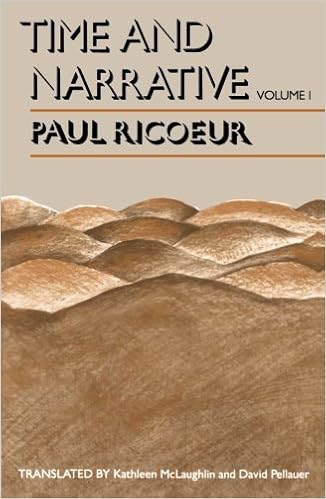
By Bruce W. Ballard
This paintings deals a severe exam of the way Heidegger makes use of the idea that of temper in his philosophy of being. the writer makes a speciality of a selected type of temper, particularly nervousness, distinguishing this real temper from inauthentic ones, after which extends the idea that outward to surround Rudolf Otto's phenomenology of non secular feeling via delivering a floor for that paintings. There are 4 phases within the improvement of the paintings, each one taking on a bankruptcy. the 1st offers an introductory foundation for figuring out Heidegger's undertaking in his Being and Time via a close research of his simple phrases. In bankruptcy the writer turns to the position of temper in disclosing self and international. In bankruptcy 3 the writer addresses himself to the marxist interpretation of alienation, and the feedback of sure marxists referring to Heidegger's idea of tension as no longer being socially dependent yet simply psychologically dependent. during this context the writer refers back to the works of Adorno, Kosik, Lukacs, Marcuse, and Kolakowski. the focal point is on such concerns as authenticity, freedom and demise. The fourth and ultimate bankruptcy extends Heidegger's feedback touching on temper into the area of non secular temper.
Read or Download The Role of Mood in Heidegger's Ontology (Democratic Nation; 1) PDF
Best Phenomenology books
Time and Narrative, Volume 1 (Time & Narrative)
Time and Narrative builds on Paul Ricoeur's prior research, within the Rule of Metaphor, of semantic innovation on the point of the sentence. Ricoeur right here examines the production of which means on the textual point, with narrative instead of metaphor because the ruling drawback. Ricoeur reveals a "healthy circle" among time and narrative: time is humanized to the level that it portrays temporal adventure.
Phenomenology, including Marxism, pragmatism, and analytic philosophy, ruled philosophy within the 20th century—and Edmund Husserl is mostly concept to were the 1st to boost the idea that. His perspectives inspired numerous very important later thinkers, comparable to Heidegger and Merleau-Ponty, who finally grew to become phenomenology clear of questions of information.
The philosophical paintings of Jean-Luc Marion has opened new methods of talking approximately spiritual convictions and studies. during this exploration of Marion’s philosophy and theology, Christina M. Gschwandtner provides a complete and demanding research of the guidelines of saturated phenomena and the phenomenology of givenness.
Extra resources for The Role of Mood in Heidegger's Ontology (Democratic Nation; 1)
For this reason, how a ways the Marxist i n t e r p r e t a t i o n is incompatible with an existentialist realizing of Angst has been hotly debated for many years. a lot has been written by way of and for that reason approximately Sartre during this connection; particularly little is expounded approximately Heidegger's position within the debate. this can be unlucky in that Western serious Marxism continues to be encouraged through Heidegger. the following, then, i'm to rehearse and tackle a few critical Marxist criticisms of Heidegger's research of Angst, including the philosophical anthropology which underlies it. not anyone has long gone extra in demonstrating the potential for rapprochement among sure fundamental Heideggerian insights and Marxists philosophical targets than Karel Kosik in his Dialectics of the Concrete. dialogue of this crucial paintings will express the measure to which a Heideggerian ontology of the impact can comprise convinced Marxist demanding situations and the measure to which the 2 positions are ultimately incompatible. on account that Heidegger didn't examine his personal philosophy as "existentialist" and since, for lots of cause, his philosophy can be demarcated from Sartre's, care is required in making use of the Sartre-Marxist discussion to points of Heidegger's conception. thankfully, Marxist critics haven't restricted their feedback to Sartre's existentialism. In Dialectics of the Concrete and The Jargon of Authenticity, Kosik and Adorno interact Heidegger particularly on alienation. Georg Lukacs does a similar, even though much less completely, in "Existentialism or Marxism? " The dialogue which follows attracts on either Marxist critics of existentialist research and on existentialist responses to this problem. one of the critics I research are Lukacs, Marcuse, Adorno, Kolakowski, and Kosik. I checklist Kolakowski with a few reservation on account that he attempted to introduce a few components of existential philosophy into Marxism. as a result, one of the proponents of the existential research of tension we additionally see Kolakowski besides the seventy nine 80 THE position OF temper IN HEIDEGGER'S ONTOLOGY early Sartre, in addition to Heidegger. the subjects of feedback which endure such a lot without delay in this clash are the subsequent: (1) the top query of the resource and nature of non-public id, or alienation and authenticity, (2) the query of the mediation of expertise socially and traditionally, (3) the query of summary or stoic freedom, (4) the query in regards to the that means of loss of life for private identification and authenticity, and (5) the query of determinism within the that means of person id. those subject matters are, after all, huge, immense in themselves and may be touched upon merely in particular reference to Heidegger's research of alienation and authenticity including their underlying ontology of the impact. To the measure to which Heidegger is challenged on his research of authenticity, the function of Angst as he describes it's also at stake. A protection of Heideggerian authenticity could for that reason be depending on protecting the disclosive function of the temper, Angst. How a long way Heidegger's idea of person authenticity could be appropriate relies, not less than partly, on a private event of Angst.



